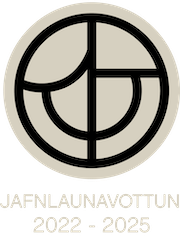Ný gerð af rafefnahvötum úr kolefni - verkefni lokið
Fréttatilkynning verkefnisstjóra
Theoretical calculations of electrocatalytic processes involved in fuel cells and electrolysers were carried out to determine whether metal free carbon based materials could provide a cheap and abundant alternative to precious metals, such as platinum, and important processes on conventional electrocatalysts such as copper and platinum where studied to determine the atomic scale mechanism of the active processes.
While experimental and previous theoretical calculations had indicated doped graphene could give low overpotential for the oxygen reduction reaction, the higher level calculations carried out in the present project cast doubt on that and support experimental reports indicating that metal impurities can be responsible for the catalytic activity. The surface oxydation and mechanism for possible degradation of the currently optimal catalyst, platinum nanoparticles, was identified from the calculations, as well as a detailed mechanism for the electrochemical reduction of CO2 to form hydrocarbons and alcohols.
Information on how the results will be applied:
The results will be used to look for ways to reduce the oxidative degradation of platinum nanoparticle catalysts for oxygen reduction reaction and develop improved copper based catalysts for CO2 reduction to form valuable products such as fuel and raw material for chemical industry.
A list of the project’s outputs:
1. The efficiency of metal free doped graphene is found not to be supported by calculations based on more accurate theoretical approaches than were used in previous, published studies. This supports suggestions made that metal impurities are largely responsible for the observed catalytic activity.
2. The calculations indicate that surface oxidation of platinum nanoparticles is a greater problem and could be an important mechanism for degradation of platinum nanoparticle catalysts.
3. The atomic scale mechanism for CO2 electroreduction on copper electrodes to form hydrocarbon and alcohols has been established, paving the way for possible improvements in efficiency and selectivity.
4. Important steps towards improved simulation methodology have been taken by establishing rigorous approaches to hybrid simulation schemes
Heiti verkefnis: Ný
gerð af rafefnahvötum úr kolefni/Novel electrocatalysts based on
carbon materials
Verkefnisstjóri: Hannes Jónsson, Háskóla Íslands
Tegund styrks: Verkefnisstyrkur
Styrktímabil: 2017-2019
Fjárhæð styrks kr. 54.733.000
Tilvísunarnúmer Rannís: 174582


